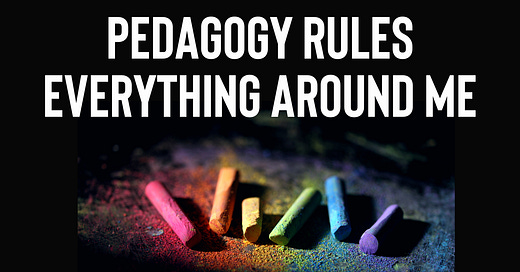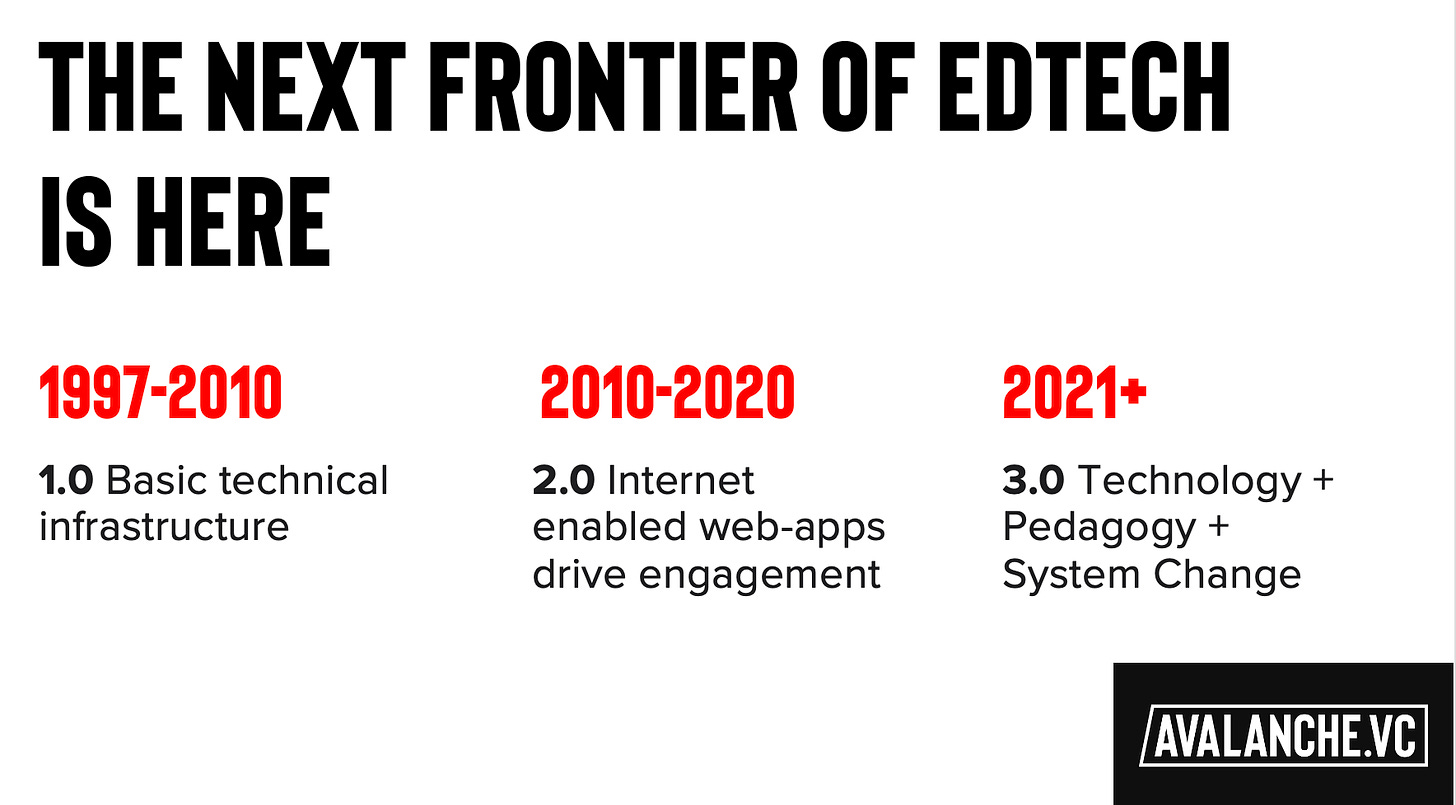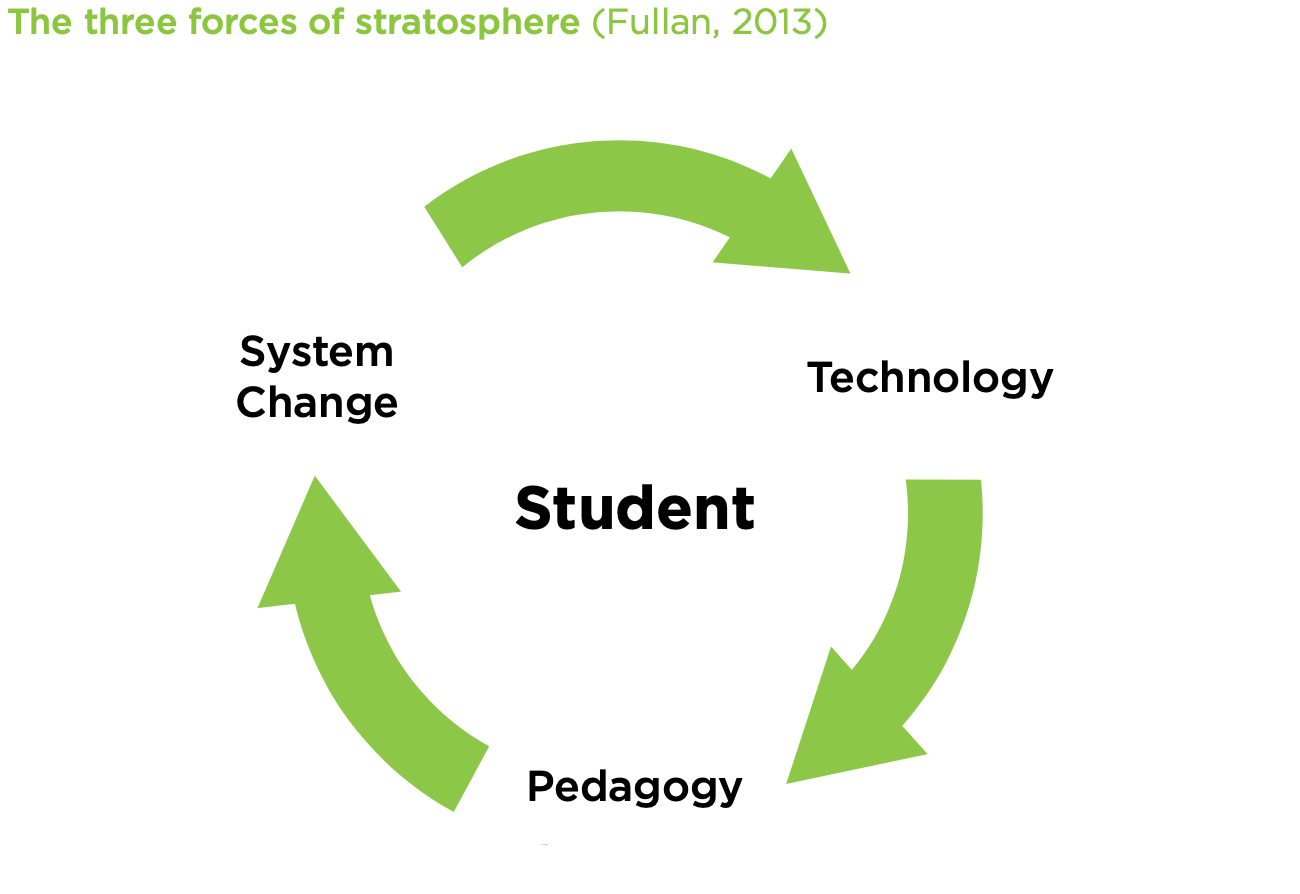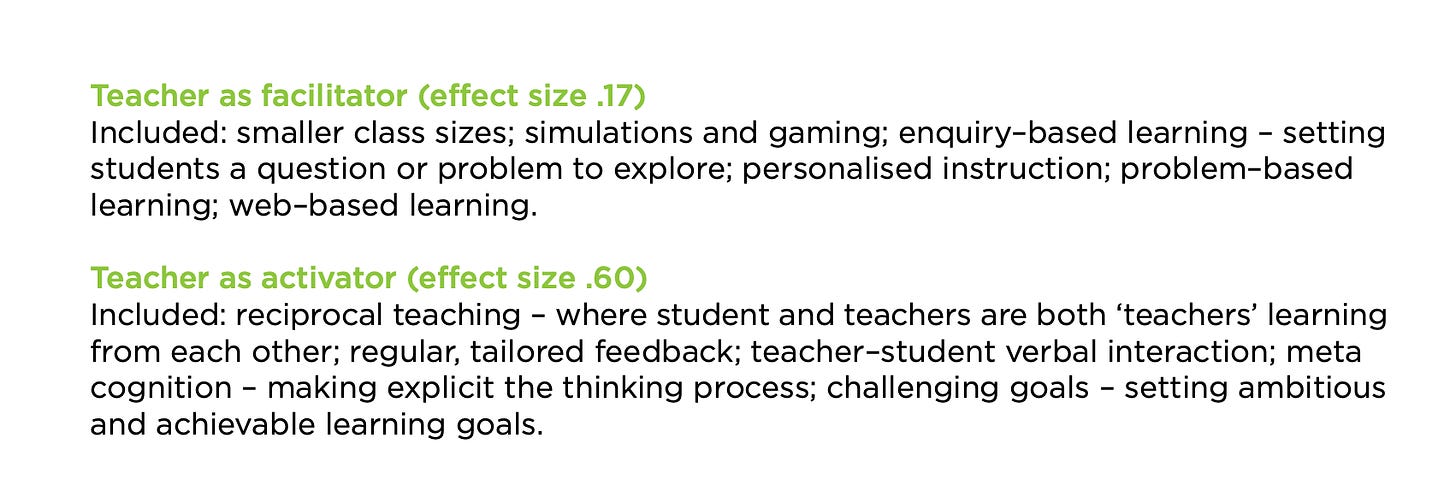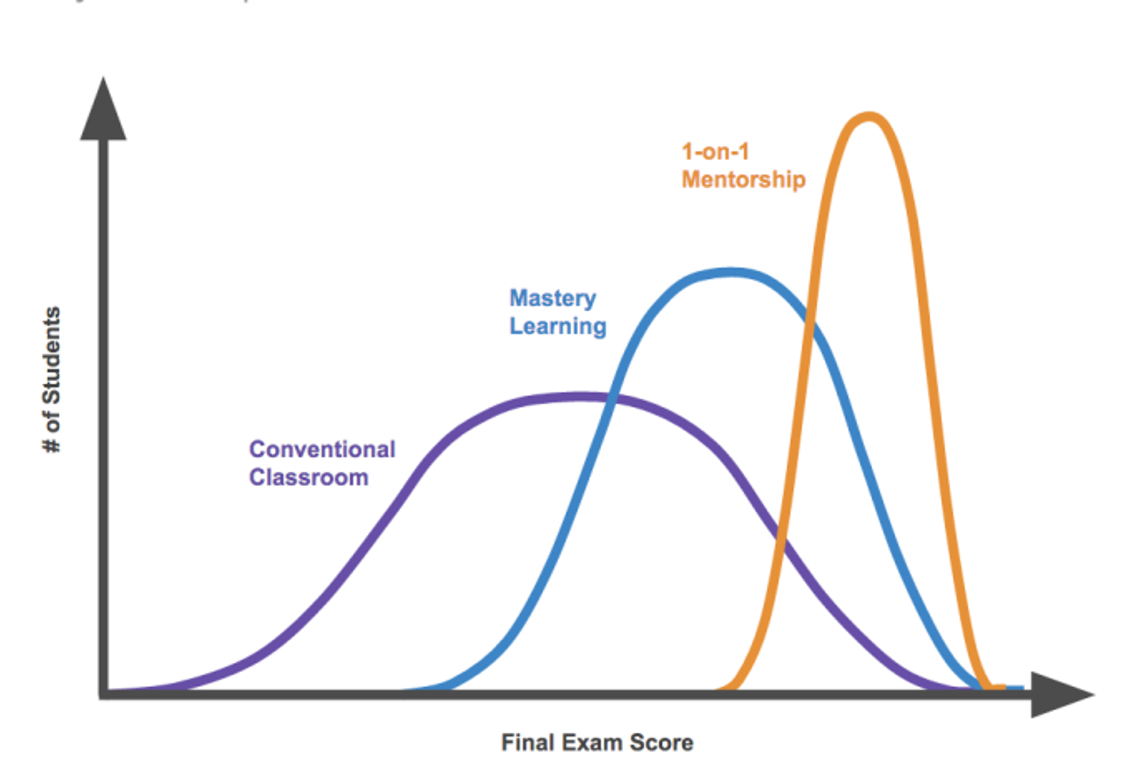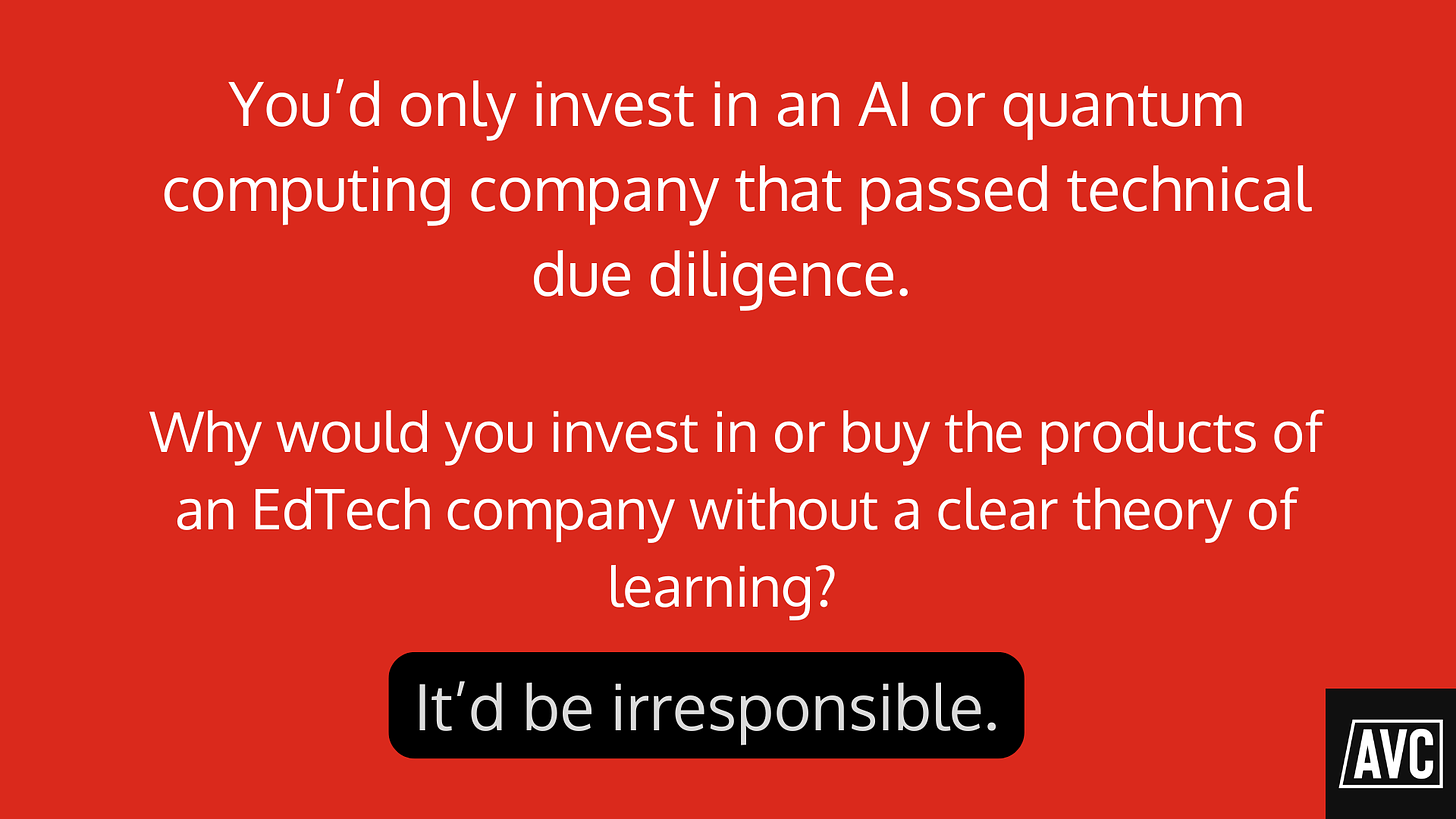Pedagogy Rules Everything Around Me
P.R.E.A.M., get the skills. Actually learn something, y’all.
The situation today: despite the technology being ubiquitous, learning outcomes are still stubbornly low
Useless education is still prevalent: We’ve all sat bored through a lecture, have been assigned to read a lifeless textbook or instruction manual, or have been expected to retain information from passively watching videos. It happens throughout life. It’s content you can’t see a use for and has no obvious, immediate application. It often comes via a delivery method that you know will prove useless when it comes to you retaining anything. It all feels like a performative waste of time.
Technology is now ubiquitous. In homes. In the workplace. In hands. In classrooms. Nearly everyone everywhere has a device that lets them tap into the World Wide Web. Google is a verb. Facebook is the primary source of truth for many. Education has followed pace and accelerated in the time of Covid.
If we have great technology that operates at scale, why do poor-quality learning experiences still happen?
Despite technology pervading education products, many EdTech products haven’t followed the basics of learning science.
EdTech 1.0 was the age of basic technology infrastructure, including student information systems and ubiquitous tablets/laptops. EdTech 2.0 was the wave of implementing engagement mechanisms: video lessons, generic quizzes, gamification infrastructure, and functional learning management systems. Each wave was necessary, important, and disruptive. But neither has fulfilled its ultimate promise: transformed outcomes.
Unfortunately, test scores on basic literacy and numeracy exams haven’t budged. There are still many more job openings for technical talent than applicants with the appropriate skills.
If the last school year taught us anything, technology-enabled learning is here to stay. And when it’s done well, it can be transformative for any skill, setting, or stage of learning. And when it’s done poorly? Well, it’s a waste of time and money.
Strong pedagogy designed into tech products is critical.
What do I mean by pedagogy? Pedagogy is the formal word for the science of learning or the approach to teaching. Often, too little time is devoted to this area. We understand the desired outcomes and have mechanisms to measure them, but we have not implemented the appropriate pedagogy. Designing products with appropriate pedagogy that can optimize students’ engagement—benefiting from being more responsive than a textbook or auditorium-scale lecture—should improve students’ learning outcomes.
Enter EdTech 3.0: Pedagogy at the Center
True transformation, where education technology catalyzes dramatic improvements in students' learning and life outcomes, has not yet come to pass. Yet, with EdTech 3.0, we can drive efficacious learning at scale.
I (and many others) have written about the vision for efficacious education technology at scale for many years. Professor Michael Fullan and I published Alive in the Swamp in 2013, which contained an index for school administrators to evaluate EdTech solutions.
The index includes three main headings, all related to impact on the student: technology, pedagogy, and system change.
Technology quality must be high—accessible 24/7, entirely online, with robust UX/UI, and steeped in real-life problem-solving.
Pedagogy should include clear learning outcomes, a strong relationship between teacher and learner where the teacher acts as an ‘activator’ or change agent, and an embedded assessment platform for measurement.
System change includes support for implementation within the school day, the ability for schools and classrooms to collaborate and rise together, and, critically, for the school to have high value for money.
Researchers have evidence that some learning methods work better than others. Below is a meta-analysis of over 1,000 studies in which John Hattie assessed the impact of learning practices on student achievement.
‘Teacher as activator’ (or change agent) has an impact size over three times greater than ‘teacher as (mere) facilitator.’ First, it’s important to note that Hattie was not focusing on technology. Second, simulations, gaming, and web-based learning do not fare well. We guess the low impact is because they were employed with poor pedagogy. In other words, the ‘guide on the side’ is a poor pedagogue.
This could be for 5-year-olds learning to read, high school students trying to understand the world, middle schoolers learning to navigate social settings, and even corporate executives trying to understand blockchain or how to conduct a discounted cash flow. The way that learning is delivered matters.
The catch is it’s hard to do
High-quality learning products are not cheap or easy to produce. They require talented product designers, thoughtful content creators, technological experts, and management with a long-term vision. However, like any media or technology company, scale and distribution can recoup high upfront costs. Companies that create outlier products that help students learn should produce outlier financial outcomes for investors.
Can technology implement Bloom’s?
The holy grail of education has centered on
Pedagogy-led technology-enabled companies
You wouldn't invest in an artificial intelligence or quantum computing company without technical due diligence, right? So why would you invest in or buy the products of an EdTech company without an explicit theory of learning placed at the center of the product? It’d be almost irresponsible.
Here are a few companies Avalanche VC invested in that meet a high bar of exceptional pedagogical design:
The Social Institute offers a gamified online learning platform that empowers students to navigate their social world, with a particular focus on behavior on social media platforms. The platform neither endorses nor condemns social media but encourages students to make responsible daily decisions about technology use. In this instance, the pedagogy is built into the tech platform. It includes peer-to-peer content to ensure the material is cutting-edge and immediately relevant to students’ online experiences. The company has a strong focus on social-emotional learning, and they work with teachers and school administrators to fit the curriculum into the school day.
“Rather than scare and restrict, we empower and equip.” – Laura Tierney, CEO and co-founder of The Social Institute
Prisms is reinvesting the way math is taught with the insight that to learn the intuition and reasoning behind the concepts, math needs to be taught experientially and spatially. They built core Algebra and Geometry lessons using real-world problem-solving powered by virtual reality. Teachers and students receive real-time learning insights to track progress over time. Initial efficacy studies indicate strong positive results. Prisms’ first module is Pandemic: How can we save our city’s hospitals?, which allows students to develop fluency with exponential functions by experiencing and modeling the spread of a viral outbreak.
Pencil has developed dramatically better teaching tools for teachers and tutors. Its fully integrated systems create a picture of the whole student with a cutting-edge user experience. The founders have deep technical and product expertise from Google and Facebook and have brought their capabilities to produce the same quality in education.
Why is now an inflection point?
Today, internet bandwidth is generally strong, devices are almost 1-to-1, and software infrastructure is in place to power the back-end administration of schools and other organizations providing learning services. The big game-changer is that Covid restrictions opened our imagination to what could be done when the moment required it and what is now possible, especially after parents and students had to navigate a version of trial-and-error over the last eighteen months. Some schools struggled; others thrived – the key is that we collectively improve, especially as we start another unusual school year.
Additionally, venture capital is flowing into Education Technology markets. Early EdTech companies like Duolingo, Coursera, and PowerSchool have had successful public market debuts. Countless others have been valued >$1Bn in private markets. EdTech specialist funds that were once niche have now raised hundreds of millions of dollars for new funds. Generalist funds have seen the returns and are now adding EdTech as an investing vertical.
We also feel an increasing need to do something different, given that our society requires an educated populace to thrive, if not survive. Michael Barber writes of the urgency eloquently in Impossible and Necessary: Are you ready for this?
The challenges we have set for ourselves – environmental, social, and economic – as a result of the innovations of the past, can only be solved by further innovation which will need to be both scientific and ethical.
Our school system needs to foster innovative capability in every young person. This will require each young person to learn a body of knowledge, including, needless to say, to read, write and do mathematics to a good standard, and to learn how to think for themselves and influence others. Moreover, they will need to learn these things within an ethical framework which prepares them for the 21st century.
Since no school system in the world is currently achieving these objectives for every young person, innovation will be essential.
We need a populace that can read and communicate efficiently, reason through complex logic, use technology (the hammer and nail of our time), and empathize with people of various cultures and belief systems. We need young people who can innovate and build.
We need innovative education technology powered by pedagogy to get us there.
How could this trend go wrong?
Learning outcomes are challenging to measure, and there are always plenty of distractions. There might be lengthy debates over impact and research. It could take a while for winners to emerge, and we might lose valuable time.
Decision-makers might choose legacy products. The inertia of the status quo is a powerful force. While Covid has helped expand the consideration set of solutions in the near term, incumbents will fight to keep market share without investing in overhauling their product portfolios.
Buyers and Venture Capitalists need to choose based on performance and product design. Buyers of learning products are rarely trained to assess quality at a deep level, and they might be misled by snazzy marketing.
High-quality pedagogy business models might have smaller gross margins than typical software businesses. They might spend more on customer experience and R&D, while the leaner companies attract larger capital allocations and can grab the narrative.
Bottom line: Once learners experience quality, they won’t go back.
We’ve seen how wasteful it can be when education technology doesn’t work. Teachers, parents, and learners are all frustrated. Society loses. Now is the time to be bold and to design solutions that produce outcomes for learners. In the long term, quality wins.
High-quality, efficacious EdTech products will gain market share and be the commercial giants of tomorrow.
Further Reading:
The New Education Frontier. Article by Anurupa Ganguly and Jeffrey Davitz
Alive in the Swamp: Evaluating Digital Innovations in Education - Essay that turned into a book written by Michael Fullan, a world-known education expert, and I
Visible Learning - John Hattie’s ranking of influences on learning achievement
Impossible and Necessary: Are you ready for this? - Essay by Sir Michael Barber


